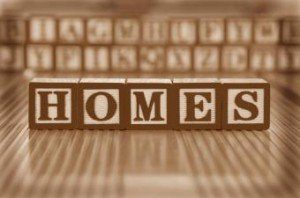 According to the U.S. Census Bureau, privately owned housing units counted by the number of building permits issued in July were at a seasonally adjusted annual rate (SAAR) of 1,442,000. This number is slightly above the revised June rate but still 13% below the July 2022 rate of 1,658,000.
According to the U.S. Census Bureau, privately owned housing units counted by the number of building permits issued in July were at a seasonally adjusted annual rate (SAAR) of 1,442,000. This number is slightly above the revised June rate but still 13% below the July 2022 rate of 1,658,000.
In total, single-family authorizations in July came in at a rate of 930,000, which is 0.6% above the revised June figure of 924,000. Multi-family authorizations of units in buildings with five units or more were at a rate of 464,000 in July.
Housing starts were also up in July according to the Census Bureau. Privately-owned housing starts in July were at a SAAR of 1,452,000, which is 3.9% above the revised June estimate of 1,398,000 and 5.8% above numbers posted in July 2022 which stood at 1,371,000.
Single family housing starts came in at a rate of 983,000 which is 6.7% above June’s 921,000 units. The July rate for units in buildings with five units or more was 460,000.
Reporting some bad news, the Census Bureau said housing completions in July stood at a SAAR of 1,321,000 which is 11.8% drop from the revised June estimate of 1,498,000 and 5.4% below the July 2022 rate of 1,396,000. However, single-family housing completions in June stood at a rate of 1,018,000 which is 1.3% above June’s rate of 1,005,000. The July rate for units in buildings with five units or more was 297,000.

First American Deputy Chief Economist Odeta Kushi weighed in on the number after they were posted Wednesday morning:
“U.S. housing starts in July were at a seasonally adjusted annual rate of 1.452 million, which is 3.9% above the downward revised June estimate of 1.398 million and is 5.9% above the July 2022 rate of 1.371 million,” Kushi said.
“Permits, housing starts and completions all ticked up in July compared with June. Permits, a leading indicator of future starts, were up 0.6% month over month, starts increased 6.7% from June, meaning more groundbreaking on new homes, and completions rose 1.3% compared with June, bringing more supply to the housing stock,” Kushi continued.
“Builder sentiment dipped in August, after rising for seven consecutive months. There remains pent-up demand in the housing market, but with mortgage rates approaching 7%, potential home buyers are feeling the pinch of declining affordability. Yet, despite the mortgage rate increase in July, single-family housing starts picked up, and permits increased to the highest level since June 2022, a sign of cautious builder optimism.”
“Demographic tailwinds from millennials continuing to age into their prime home-buying years and a lack of existing-home inventory means that new-home construction is essential in meeting shelter demand.”
“According to the National Association of Home Builders, after dropping for four straight months, the share of builders cutting prices increased to 25% in Aug from 22% in July. The share of builders using all types of incentives rose to 55% in August from 52%, but remains lower than the 62% share at the end of last year.”
“Higher mortgage rates threaten affordability and builder supply-side challenges remain, but the housing market remains fundamentally underbuilt and existing homeowners aren't moving,” Kushi concluded. “While builders can’t make existing homeowners move, they can add more new homes to the housing stock.”
Mark Palim, the Deputy Chief Economist at Fannie Mae commented:
“Today’s new residential construction report from the Census Bureau showed that single-family starts rose 6.7% to a seasonally adjusted annualized rate (SAAR) of 983,000 in July, continuing a choppy though generally upward trend since the winter,” Palim said. “Single-family permits edged up 0.6% to a SAAR of 930,000 and completions held at just over the one million mark, around where they’ve been for approximately the past 18 months.”
“We believe the convergence of these three series continues to represent a normalization in residential construction conditions as backlogs clear and demand remains sufficient given the strong labor market and lack of existing homes available for sale. Still, we note some downside risk moving forward as home builder sentiment pulled back in August amid a resurgence in mortgage rates back towards 7% . Additionally, while the July figure came in close to our Q3 forecast for starts, we continue to expect a pullback towards the end of the year as we forecast a general slowing in economic growth.”
“Multifamily starts declined 1.7 % to a SAAR of 469,000, largely in line with our expectations, while permits pulled back 1.0% to a SAAR of 512,000 after a 13.0% decline in June. We continue to expect the rate of multifamily starts to slow throughout the year as national rent growth is sluggish and banks tighten lending conditions.”

 DSNews The homepage of the servicing industry
DSNews The homepage of the servicing industry









